14 Things That Can Go Wrong When Growing Garlic
Garlic is the crop that marks the end of the garden season for me. It’s the last crop I plant in the fall, and though I still have cool-season veggies growing throughout the winter, the planting of garlic caps off the year and allows me to plan for the next season.
I recommend every gardener grow garlic — especially beginners. It is the easiest crop that I grow in my garden and gives beginners such a satisfying feeling to be successful in their first year.

Garlic is not without its problems, but most of them are easy to prevent or remedy. We talk in full detail about what can go wrong with garlic in our latest podcast. You can listen to that below or continue reading.
Common Problems in Growing Garlic in the Home Garden
Not Planting in the Fall
Many people wait and plant their garlic in spring. While you can get a harvest with spring-planted garlic, it is important that you lower your expectations for that harvest. Most likely, you’ll harvest fairly small bulbs.
Why is planting garlic in the fall a best practice? Garlic needs a cold period, also called vernalization, prior to sprouting. Hard neck garlic, specifically will be much harder to grow in the spring without that cold period. For those of us that experience true winters, planting in the fall allows garlic to grow as it was intended — with the winter providing the natural cold.
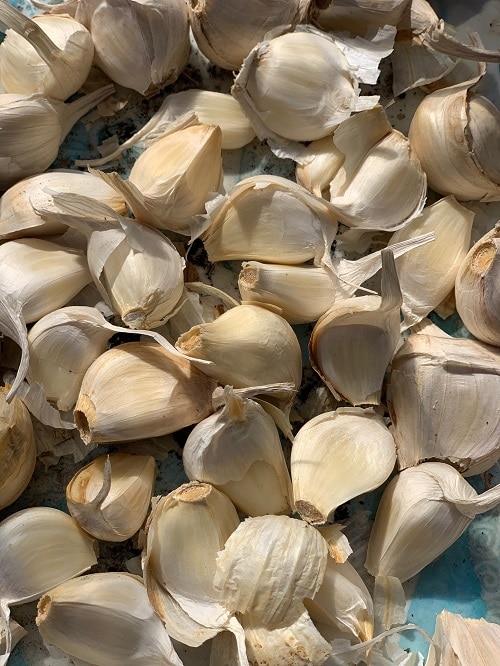
Even if you grow soft neck garlic in the spring, chances are you’ll still end up with smaller bulbs. So, plan on planting your garlic in the fall. If you’re reading this in the spring, you can plant now (with modest expectations), but prepare to plant in the fall again.
Ordering seed garlic too late
Many new garlic growers, understanding fall is the ideal planting time, tend to wait until August or September to order their seed garlic. I can tell you from personal experience that some of my favorite seed suppliers were already out of stock when I was looking for fall garlic this past August!
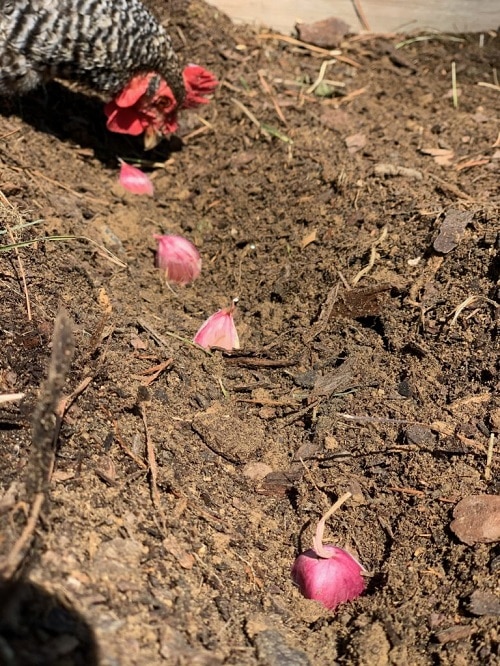
Don’t worry about ordering too early. Most of the time, garlic will ship to you from these suppliers when it’s best for your climate. So, you can order earlier and way ahead of the season to ensure you get your order in, and then you can sit back and not worry about having your garlic too early.
IF you order garlic early and you receive the shipment well before your planting date, it’s no problem. Simply open the box (for ventilation) and keep the garlic in a cool location. An inner room, out of sunlight, is perfect.
Buying the wrong seed garlic
It is imperative that you buy certified, disease-free seed garlic. Organic garlic alone will not suffice. Why? If you buy garlic at the grocery store with the intention to plant those cloves, you take a risk of bringing disease into your garden soil. This disease can contaminate your soil for up to 15 years. Not only will you not be able to grow garlic in it, but you also won’t be able to grow any other alliums (like onions) either.
If you have no other options (i.e. seed suppliers are sold out), and you take a risk and purchase this grocery store garlic, I recommend that you plant it in containers. That way if you do bring disease in, you don’t lose an entire section of your garden.
One more thing — if you plant grocery store garlic, you’re planting softneck garlic. Softneck garlic grows best in mild winter climates, so if you live in an area with long, cold winters (where the ground freezes), softneck won’t perform as well for you.
Need a step-by-step plan on growing garlic? Access my deep-dive into all things growing garlic for $15 here.
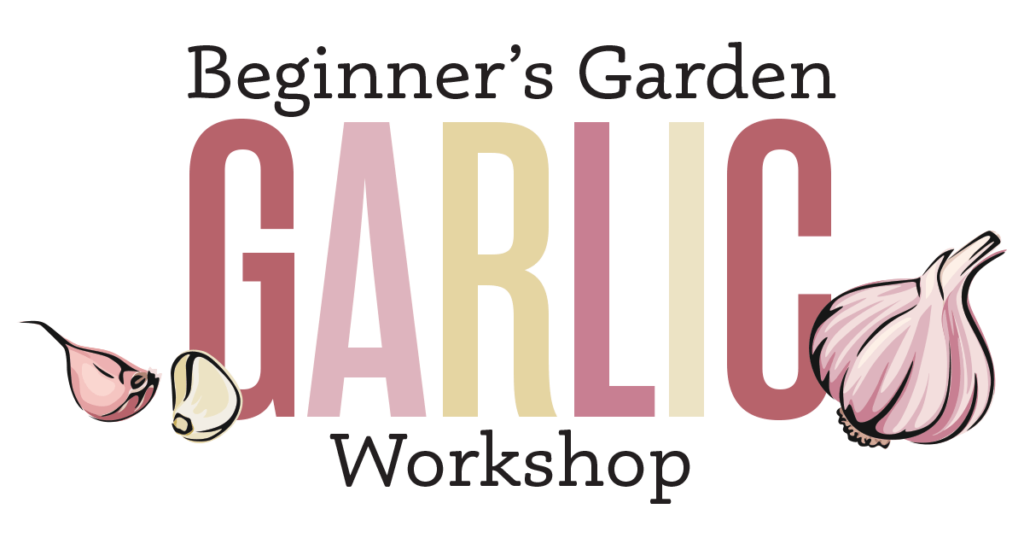
Planting small cloves
No matter where you order your seed garlic from, chances are that you’ll have larger bulbs sent to you. Some of the cloves in those bulbs will be large, but some will be small. You most definitely can plant the smaller cloves, but know that smaller cloves will most likely result in a smaller harvest.
I recommend planting your large cloves and use the smaller ones in your kitchen.
Not enriching soil prior to planting
We plant our garlic in late fall. Most of us are tired by now from the end of a long summer season. We just want to get our last crop in the ground and call it a season! However, we must not skip the important step of enriching our soil.
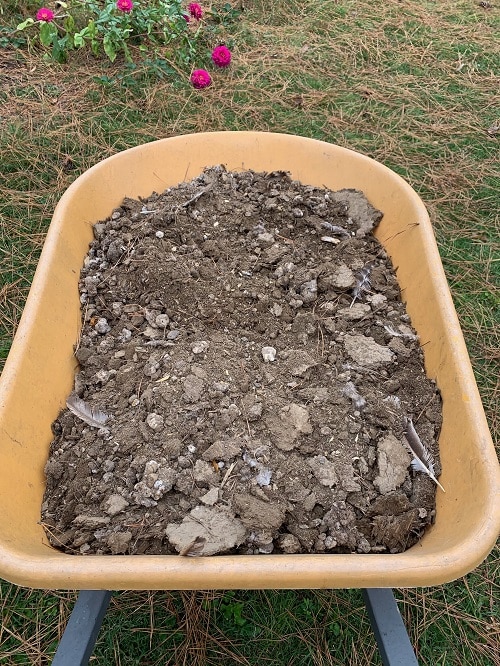
Can you still grow garlic without enriching the soil? Absolutely. I did it my first season and was thrilled with my garlic harvest. However, when I look back on those photos and recall that harvest, I realize how incredibly small my garlic plants were. Looking back, I see now that the soil was definitely lacking.
As I discuss in detail in my Garlic Workshop, garlic loves organic matter and needs a healthy dose of nitrogen. Most of this can be done prior to planting using organic inputs.
Make sure your Ph is in line
Garlic likes a PH level around 6.5. Anything between 6 to 7 is ideal. If you’re concerned about your PH level being too high or too low, I recommend a soil test, and specifically, Soil Kit (referral link).
It’s the easiest way to test your soil. They send a kit to my mailbox with full instructions on how to take a soil sample. Then, I send them the sample back (in a pre-paid envelope), and within a few days, I get an email report back letting me know exactly how I should amend the soil — dosage instructions included!
Planting too close together
For many years, I planted my garlic 4 inches apart. But as I started researching garlic more and watching a fantastic gardener friend of mine grow exceptional garlic at 6 inches apart, I wondered if that little bit of extra space would make a difference.
I started planting my garlic 6 inches apart at the same time I started enriching my soil, but I still believe that the spacing changes made a huge the difference. Garlic bulbs develop much larger when they have room to grow.
Not considering the next year’s garden layout
Garlic takes up garden space from the fall until summer. Depending on your climate and what kind of garlic you grow, this can be anytime from May through August.
That’s a long time to have a raised bed or a section of your garden tied up. So, just make sure and consider what other crops you want to grow next year when you choose where you want to plant and how much garlic you want to grow.
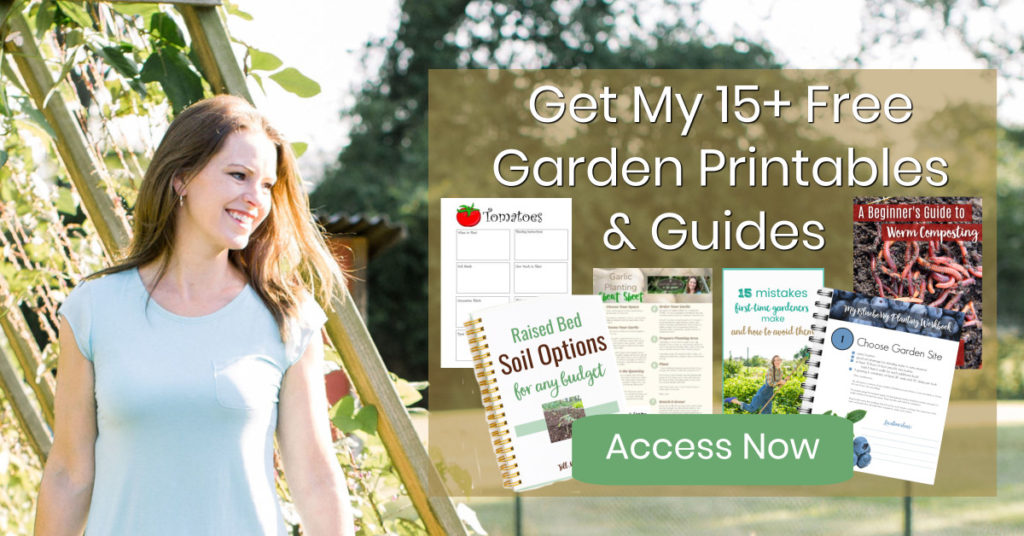
Weed competition
Unless your area remains blanketed with snow throughout the winter, you’ll notice that weeds will start to grow in late winter at about the same time as the garlic starts to grow. Garlic needs to be able to grow without that weed competition, especially early on in its growth.
Too much competition = smaller bulbs at harvest.
To mitigate this problem, I either mulch at the time of planting, or when the weeds begin growing I’ll do a thorough weeding and then add a 2″ layer of mulch. This will prevent weeds from taking hold and hampering the final harvest.
Not enough water
When garlic is starting to grow and the leaves are starting to form, it’s vital that you get an inch of water each week onto your plants. In my southeastern US climate, this isn’t an issue. We get plenty of winter rains, but if you don’t, add supplemental irrigation to ensure that one inch of water per week.
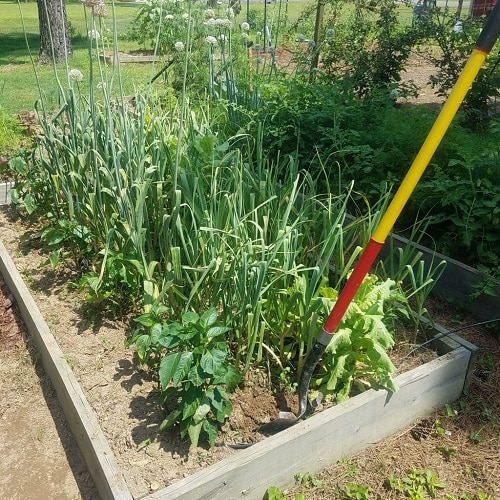
Harvesting too early or too late
While some crops are more picky about harvest time (like corn), not harvesting garlic at the perfect time won’t ruin your crop. But, there is an ideal time that will give you the largest bulbs with the longest storage life.
If you harvest your garlic too early, you won’t have as big of bulbs as you could have because they haven’t finished developing their bulbs.
If you harvest too late, they won’t be able to be stored for as long as they could have been.
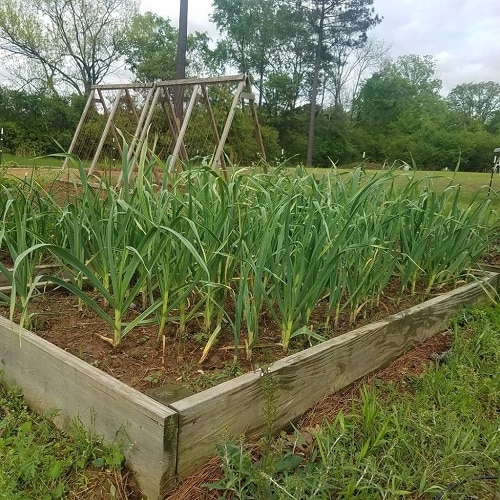
How do you know when to harvest garlic?
When the bottom half of the leaves start turning brown, it’s safe to say that bulb development has stopped. This is the perfect time to harvest. Each of those leaves represents a layer of wrapping around the garlic, and so if you wait until they are all brown, you risk decomposition of that critical wrapping. This can lead to moisture getting into the garlic, which can cause rot and shorten the shelf-life.
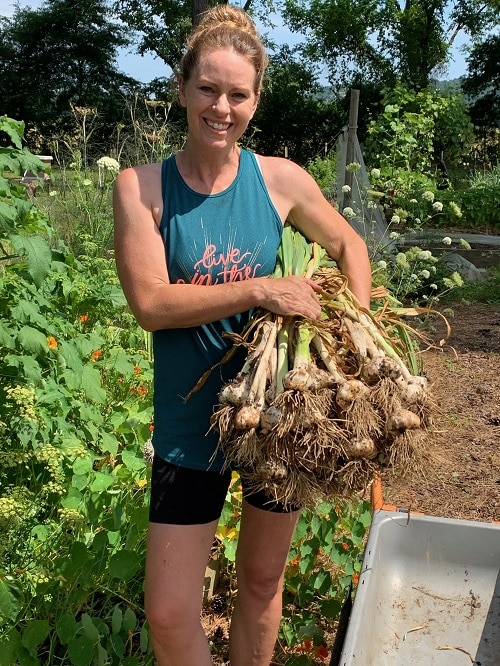
Not curing the garlic
After we have dug up our garlic harvest, it is absolutely okay to eat it that day, or throw it in the refrigerator and eat in the next week or so. But, curing garlic for storage is how we ensure we get to eat garlic for months.
When determining whether the curing process is complete, it’s vital that we make sure the garlic is completely dry. Depending on your zone and weather (humidity = longer time to cure), the garlic can take over a month to cure completely.
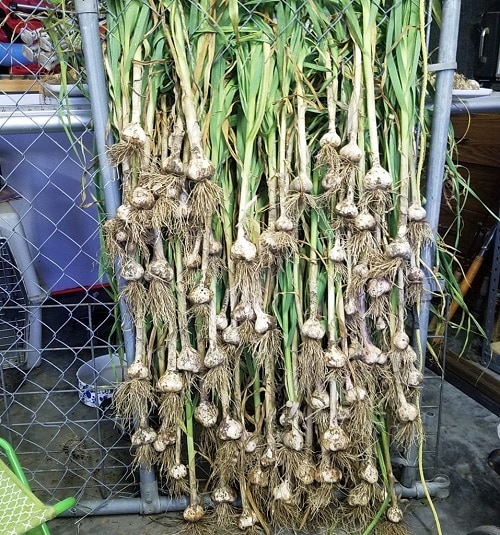
Not planting according to your climate
Because garlic needs that cold period to grow, it’s imperative that you take extra steps for a successful harvest if you live in a frost-free climate. I recommend finding other gardeners in your area that grow garlic and find out what tips and tricks they use to have a fruitful harvest.
For example, our friend Kevin from Epic Gardening has an entire YouTube Series about his garlic harvest in the San Diego area.
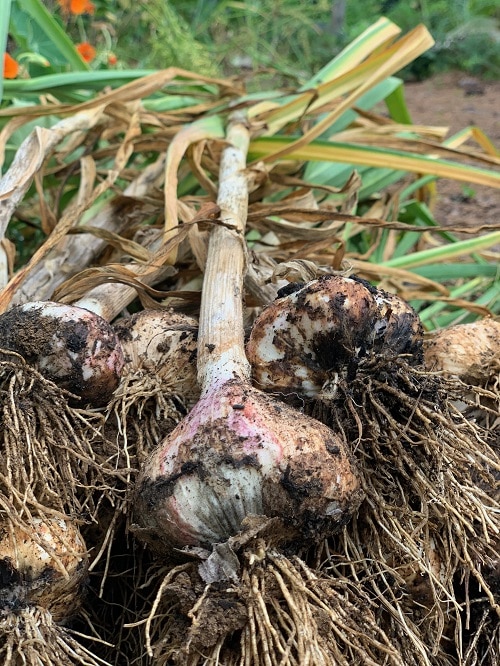
On the other end, if you grow garlic in an extremely cold climate, you’ll have other considerations. Most cold climate growers need to mulch thickly after planting in the fall — some up to six inches or more! Then, they may have to rake back that mulch as spring arrives.
The good thing is, with garlic, you’re almost guaranteed some kind of harvest, and we all learn what works and doesn’t work in our particular climates as we test and grow each year.
If you’re interested in learning more about how to grow garlic, head on over to our Garlic Workshop. Lastly, tag us on Instagram with those garlic shots! We’d love to see your pics!
Do you get overwhelmed with garden planning?

Subscribe here for my best tips to plan your garden in just 7 days -- all for FREE.
Plus, I'll send you my "In the Garden E-mail" on Fridays, periodic updates on garden resources relevant to you, and you'll receive access to my entire bank of free garden downloads!
You are also agreeing to our privacy policy.

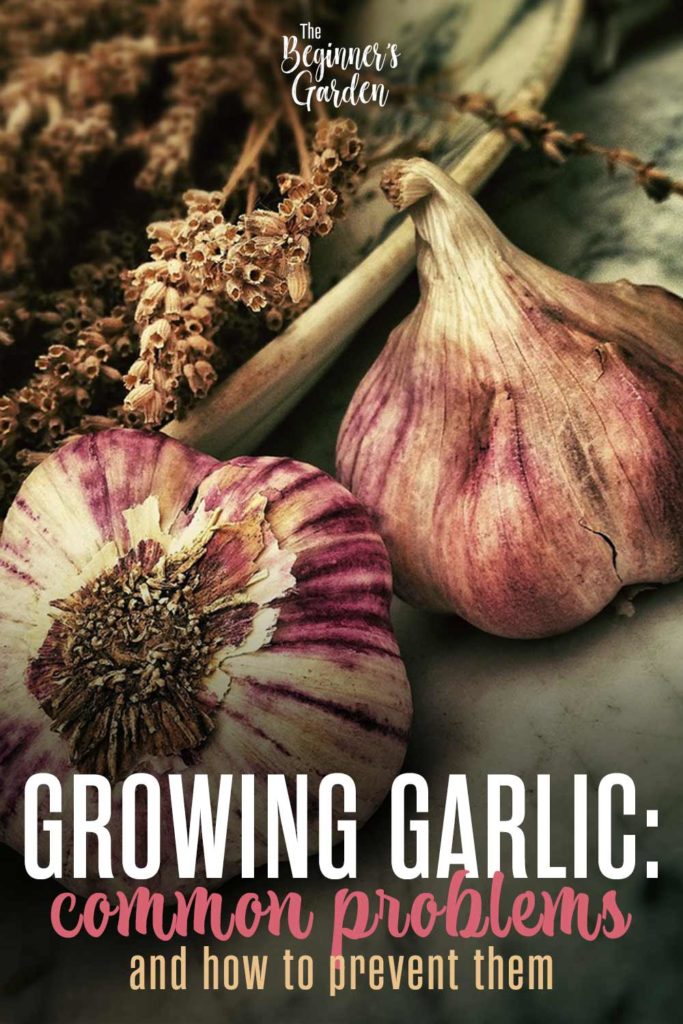
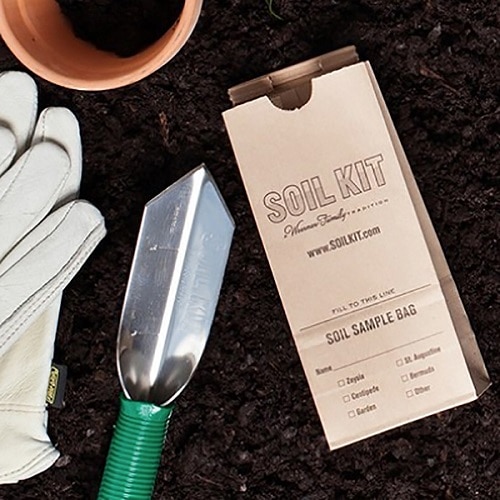
Do you use Rev on your garlic seed?
I did last year. I didn’t test any side by side; I soaked them all with REV. This year I’m thinking about doing a test.
I live in central Montana and thus far our weather has been unusually warm and dry. Typically by December my garlic is covered in snow but not this year. Iam tempted to give my garlic a little drink, although they are tucked under a layer of mulch and then straw. Your suggestion.
I’m sorry, I don’t have any experience with your winters to be able to give you educated guidance. My guess would be that watering wouldn’t hurt if you haven’t had any rain of any kind. I never have to water my garlic over the winter, and we get little to no snowfall each year. But it does rain every week or so during the winter. You don’t want to overwater, however, because it could cause the cloves to rot. I’ve never had that problem, but my garlic sprouts in the fall so it has roots to take up excess water. If yours has not sprouted, I’d be more cautious about watering.
I live in Gainesville, FL. I planted garlic November 15th and covered with 4+ inches of pine mulch. They are growing through the mulch already, is there anything I can do? I kept covering with more mulch but they keep finding their way out. I have cut the greens back and again they find their way back.
This is normal. Mine sprout within days each fall and they always harvest just fine. You don’t need to cover them anymore; in fact, I’d remove some of that mulch in Florida. I only have probably a 1-2″ layer of mulch in Arkansas and that’s mostly to keep weeds at bay. Don’t cut the greens, either. They will be what nourish your garlic plants when they start growing again soon.